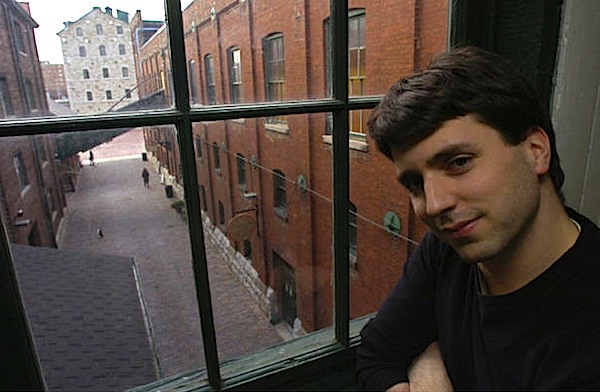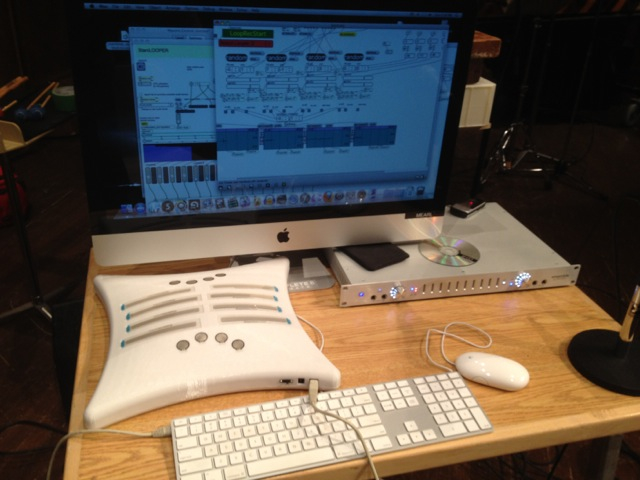
Because he now spends a lot of time in St. John’s, Nfld., Andrew Staniland isn’t really a Toronto composer any more. But he’s back on Feb. 10, sharing the stage with percussion master Ryan Scott in a demonstration inspired by the leading edge of sound technology.
- Classical Music 101: What Does A Conductor Do? - June 17, 2019
- Classical Music 101 | What Does Period Instrument Mean? - May 6, 2019
- CLASSICAL MUSIC 101 | What Does It Mean To Be In Tune? - April 23, 2019
Manipulating sound is as close and friendly as your iPad and used every day by all sorts of musicians and songwriters — except for people who work with art music.
Only a small percentage of composers and performers stray beyond contentional acoustic means, even in mainstream new music.
So it’s fascinating to see that Staniland, who has worked with the Toronto Symphony, has not only discovered the joys of manipulating sound electronically, he has become one of the people working at its leading edge at Memorial University.
Torontonians get a chance to, um, sample, one of the fruits of Staniland’s labours on Sunday at a concert being jointly presented by Continuum Contemporary Music and New Adventures In Sound Art at the Citadel (Coleman-Lemieux’s wonderful new home and performance space in Regent Park).

Stanilands’ contribution to the programme is Taking Down the Tiger, a piece commissioned by Scott.
This acoustic-digital duet features Scott on a traditional array of percussion instruments and Staniland at a computer, creating and mixing loops.
(In case you don’t know what a loop is, it’s a sequence of recorded sounds, usually only a few seconds in length, set up to repeat — in a loop. These loops can be stacked, layered and modified on the fly using a computer or even a tablet or smartphone.)
This sort of duet is not common in the art music world. Even less common is a composer who has taken an active interest in developing a better digital instrument.
Stanilands, who is a composition prof at Memorial, is at the heart of a new research group known as the Memorial Acoustic Research Laboratory (MEARL). Working with students from the Engineering faculty, the group has created the ARC-16, a device that helps record and manipulate sound.
Scott visited Stanilands at Memorial and has detailed the experience in a background piece posted on the Countinuum website.

“After a quick lesson with Andrew, I tapped on the microphone, capturing the sound in the ARC-16,” writes Scott. “I then began sliding my fingers on the various sensors and had soon created an electronic symphony that blasted throughout the surround sound system in the hall, all from a tiny tap. It was an extraordinary experience for me in new forms of sound production and alteration.”
Scott continues: “Over the past three years, Talking Down the Tiger has developed into a true duo, with Staniland on stage next to a massive percussion setup, reacting and transforming the very complex written material which I perform. What Andrew is able to do with the many sounds of the percussion setup is incredible. ”
The percussionist was also curious why Staniland would get involved in designing digital devices.
The composer explained that the original setup, an analog mixing board, with sliders and dials, didn’t feel right in a performance context.
“The biggest shortfall was the lack of visual feedback,” Staniland explained. “The correlation between action and sound is so present in percussion (i.e. mallet hits gong), but is totally lacking in electro-acoustic performance (i.e. sliding a mixing desk-style slider or potentiometer that the audience can not even see). Also, the mixing-desk style fader box never really felt like an ‘instrument’.”
Staniland said that the original shape was inspired by a frame drum, gradually evolving into something that “can be held and calibrated in many different ways.”
You can read Scott’s full report here.
Continuum is grounded in acoustic performance. New Adventures in Sound Art is all about exploring the sounds of our world through electronic ears. Staniland’s piece is an obvious meeting point, but there are other intersections between these worlds on the programme, which includes pieces by Rose Bolton, Scott Wilson, Daniel Mayer and Scott Smallwood.
You’ll find all the details for the Feb. 10 concert here.
And this is the promo video, which uses portions of Taking Down the Tiger in its soundtrack:
John Terauds
- Classical Music 101: What Does A Conductor Do? - June 17, 2019
- Classical Music 101 | What Does Period Instrument Mean? - May 6, 2019
- CLASSICAL MUSIC 101 | What Does It Mean To Be In Tune? - April 23, 2019



